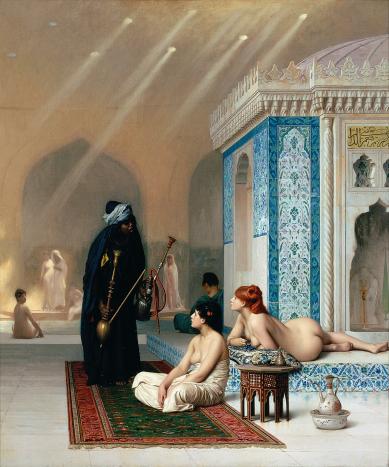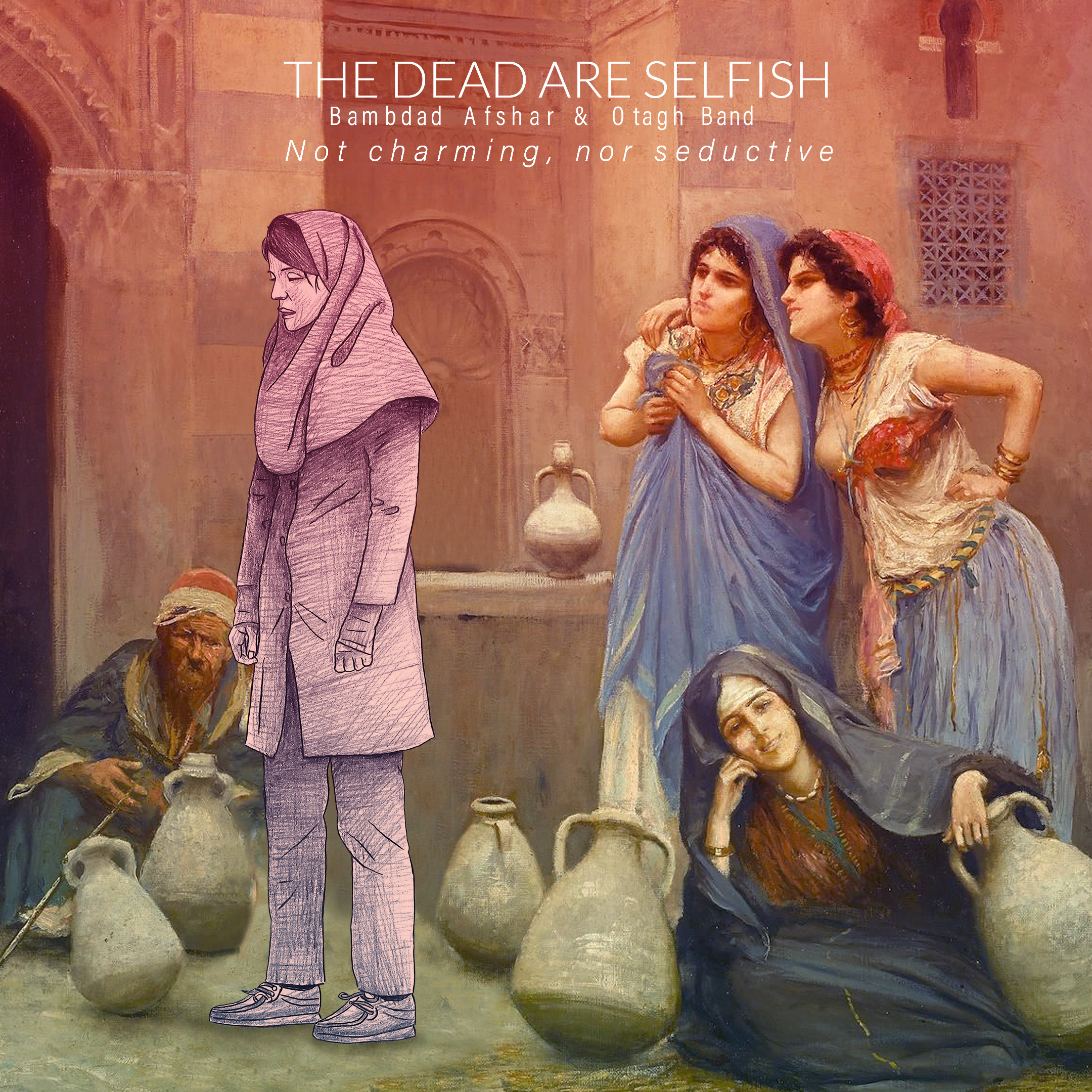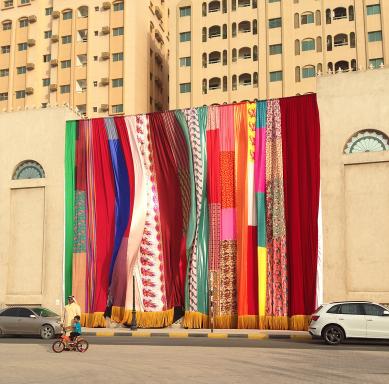Challenging Orientalism Pt. 4
Six international curators from the Norient community have researched contemporary music videos that re-imagine, parody, or deconstruct Orientalism. The final selection is presented in the virtual exhibition «DisOrient: Welcome to the Hall of Mirrors», which is part of the German festival Mannheimer Sommer. Here is the shortlist curated by artist and musician Ali Sayah, who focuses on the Iranian indie scene. It’s going to be dark, surreal, and very spatial...
Music: Otagh Band
Video: Bamdad Afshar
Track: The Dead Are Selfish (Iran, 2019)
This video shows many of the stereotypical components of Orientalist paintings. It deconstructs the Orientalist perspective by contradicting the associated expectations of its viewers. A mechanical, skeleton-like hand plays something on the keyboard of a simple self-made instrument and each note that we hear is distorted. Next we see a setting that we are familiar with through a number of Orientalist paintings: a girl with a headscarf in an exotic building. Despite the familiar structure, this setting shows no sign of the usual eroticism and exoticism of Orientalist paintings: the girl is dressed very plainly, her movements are mechanical, and she is neither charming nor seductive. Finally, the building is a ruin. The video shows many of the components of Orientalist paintings and by contradicting the interconnected expectations, it deconstructs the Orientalist perspective.

Music: Mentrix
Video: Gilles Esteve
Track: Walk (Iran, 2020)
«Walk» is a music video by Iran-born and Berlin-based artist Samar Rad, who leads the band Mentrix. In this video you see the sights of a deserted city, concrete buildings with Persian architecture, shops, and neon light signs. In front, you can see young girls wearing hijab (veil) performing or standing still with a cold look staring at the camera; girls who somehow seem to rebel. It looks as though they are on a journey (odyssey) from the hurt of the desert to utopia (maybe). Again, similar images can be seen in Orientalist paintings: Oriental charm of girls wearing hijab being in imaginary and exotic places in the absence of men. Self-Orientalization is what you can see in this video. The same thing is happening in the music somehow as the daf, a Persian frame drum, is used to make the rhythm and is mixed with English lyrics. The tune and melody belong to Iranian music and evoke elements of prayer rituals and Sufi music.
Music: Elemaun
Video: Pooyan Ranjbar
Track: Endelah (Iran, 2017)
Richard Taruskin is a U.S. musicologist who considers Orientalism in romantic Russian music as «having melodies full of close little ornaments and melismas» (Taruskin 1997, 156), chromatic accompanying lines, and drone bass. The track «Endelah» is doing exactly that. It begins with a drone sound with consecutive and repetitive notes. Next, a Balochi melody1 with lots of close little ornaments and melismas is added. The way this is done sounds exotic, even for Iranians. The camera enters the bright courtyard of a mosque from a dark water reservoir underneath. We follow someone whose face cannot be seen due to the high black and white contrast when filming the atmosphere of Iranian architecture. This makes the video even more mysterious.
Music: Jalboat
Video: Mehrdad Motejali
Track: Darvag (Iran, 2020)
Jalboat’s track «Darvag» is based on a poem by the well-known Iranian poet Nimā a Youushij (1897–1960). The entire poem is a conversation between Yushij and a tree frog called «Darvag». The poet asks the frog about the time when it’s going to rain and he starts with this sentence: «My farm has become dry alongside the neighbor’s farm.» In comparison with the former Iranian neighbor the Soviet Union, this means that Iran lacks social change. Seyyed Rahim Moosavinia, Nozar Niazi, and Ahmad Ghaforianas have summarized it as follows: «Orientalism is affiliated with the representation of the Self or Occident and the Other or Orient in which the Self is privileged and has the upper hand to define, reconstruct the passive, silent and weak Other» (Moosavinia, Niazi and Ghaforianas 2011, 103). In Jalboat’s video, we see a strange, alien-like creature, who performs weird movements in an abandoned and ruined place. A fusion style music can be heard, a combination of folk music from South Iran and rock, creating an unfamiliar atmosphere.
Music and Video: Ali Sayah
Track: TA'ZIEH (Germany, 2016)
Ta’zieh, primarily known from the Persian tradition, is a Shiite ritual (Condolence Theater or Passion Play) that reenacts the death of Hussein (prophet Muhammad’s grandson), his male children, and his companions in a brutal massacre on the plains of Karbala, Iraq, in the year 680 A.D. My video «TA’ZIEH» is a combination of film footage from different Ta’zieh representations, a mourning ritual for Husayn ibn Ali, the third imam of Shi’ism, and a procession from the same context. The video narrates linearly the «Battle of Karbala». The remixed rituals involve a distinct music with particular rhythm, instruments, and chant. The music of «TA’ZIEH» relies on these elements within the genre of electro-acoustic drum ’n’ bass.
In his book Islamic Liberation Theology, the Iranian philosopher Hamid Dabashi contextualizes Ta’zieh from a contemporary perspective:
Today, it is impossible to understand Ta’ziyeh outside its Islamic and Shi’i context. To exoticize it as «traditional theater», the way classical Orientalism has done it, to isolate and sever it from the rest of the creative culture that generates and sustains it, the way contemporary anthropology has done it, or else to assimilate it backward to its possible Iranian roots in Seyavashan, as the Iranian nativist reading is wont to do, all rob Ta’ziyeh of its integral location in the entirety of its immediate cultural universe. Above all else, Ta’ziyeh is a communal act of collective redemption – its performative, dramatic, mimetic, and dramaturgical dimensions all integral to this its most defining significance. (Dabashi 2008, 187)
In conclusion, the music video «TA’ZIEH» creates a symbolic narrative of a historical ritual.
- 1. The Baloch are an Iranian people, mainly living in the Southeast of Iran.
List of References
This playlist has been compiled in the context of «DisOrient: Welcome to the Hall of Mirrors». A virtual music video exhibition by Norient for Mannheimer Sommer (July 12–22, 2020). Because of the Corona pandemic, the festival took place as a virtual event.
Biography
Links
Published on June 22, 2020
Last updated on August 21, 2020
Topics
Does one really need the other in order to understand oneself?
From Self-Orientalism in Arab music to the sheer exploitation of Brazilian funk music by acclaimed artists: how exotica examine aesthetics playing with the other and cultural misunderstandings.
From Pakistani wrestling practice «kushti» to muezzin singing contests in Turkey.
Special
Snap


